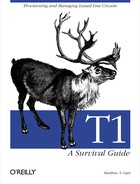Any comprehensibility in the language I use is due to a long line of stellar teachers and professors who helped me to constantly improve my writing. I was fortunate to have attended an institution that prides itself on teaching all students to write, even those of us who majored in physics. Eliza Willis, my tutorial professor and initial academic advisor, had one of the strongest influences on my writing in my college years. One of her evaluations expressed the hope that I would continue to develop my writing, though I hope no readers hold my style against her. As my first academic advisor, much of her effort was spent ensuring that I did not take too many classes in the science building. My curriculum should be taken as definitive proof of her diplomacy and persuasiveness, as well as evidence that I even followed most of her advice. During my senior year, she received tenure. Granting her tenure should have been one of the easiest decisions any institution has ever had to make, and it guarantees that her influence on the world is only just beginning.
Several of my coworkers and friends provided encouragement and support along the way. In particular, Brian McMahon was invaluable. Brian is one of the extremely talented old-guard networkers from whom we have much to learn. I was fortunate to meet him in 1995, when the history of the Internet was shorter and simpler and protocols were fewer. (Some might even say that all the computers connected to it were above-average, too.) Brian has a deep understanding of T1s gained from two years with Cisco, and he graciously let me draw on his knowledge to provide a practical underpinning for a great deal of the material in this book. Most of his help with information on channelized T1 should be evident in Appendix A, especially any portions related to signaling. He also suggested the title for the book and is indirectly responsible for the choice of animal on the cover. I am also grateful for Brian’s detailed technical review of the book, which helped me clear up a number of misconceptions that the initial draft may have inspired in readers.
My efforts to include photographs resulted from the aid of two colleagues in particular. Jerald Josephs, a colleague on the sales engineering team at Nokia, lent me his digital camera and took time out of his busy schedule to teach me how to use it. Giao Le let me into the telephone room at Nokia’s Silicon Valley installation to photograph the smart jacks shown in Chapter 2.
Before I started writing, I had no idea how large a cast of characters went into book production. A great number of talented people have teamed up to provide me with a set of broad shoulders on which to stand. My family and friends, the group of people most familiar with my artistic (in)abilities, will easily see the tremendous work done by Jessamyn Read in the O’Reilly Illustration department. To fully appreciate her talents, you would have to see the obscure chicken-scratchings and mysterious hieroglyphics that metamorphosed into a stunning set of figures by her hand. Mike Loukides once again kept me on track and focused on the task, which I especially appreciated when writing about telecommunications. Standards are dense and multitudinous, and I could have easily turned this project into my life’s work as I chased down “just one more standard.” Mike’s assistance was most welcome in balancing the goals of making the book complete and getting the book finished—and it is certainly better for his balance.
One of the major difficulties in writing a technical book is the desire to ensure accuracy. In telecommunications, more so than other fields, it is difficult to keep the writing interesting yet technically accurate. My excellent review team helped keep me honest and caught several mistakes that I found tremendously embarrassing. Steve Pinkston of ADC brought a formidable degree of expertise to the review, and his comments led to significant improvements in nearly every chapter. Thanks also go to Dianna Mullet of L3 Communications and Kevin Mullet of the University of Texas at Dallas. As authors themselves (of O’Reilly’s Managing IMAP), they were able to provide subtle guidance on numerous aspects of the HDLC and PPP chapters. Dianna’s notes helped me to pass through the minefield that is PPP without too much permanent damage. Kevin’s observations led to a series of improvements in several parts of the book. One of Kevin’s suggestions put me on the right path to improving the multilink PPP information provided in Appendix B, and a few of his notes wound up in the reference appendix (Appendix F).
